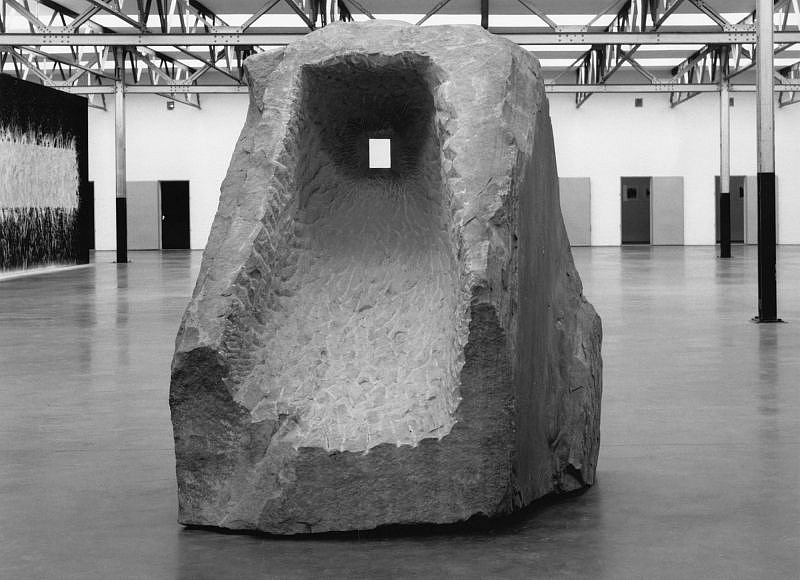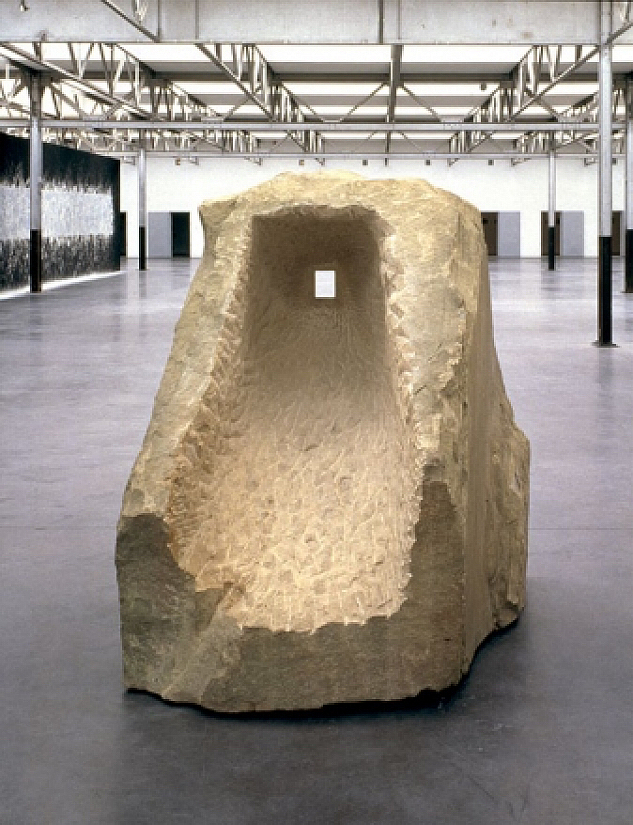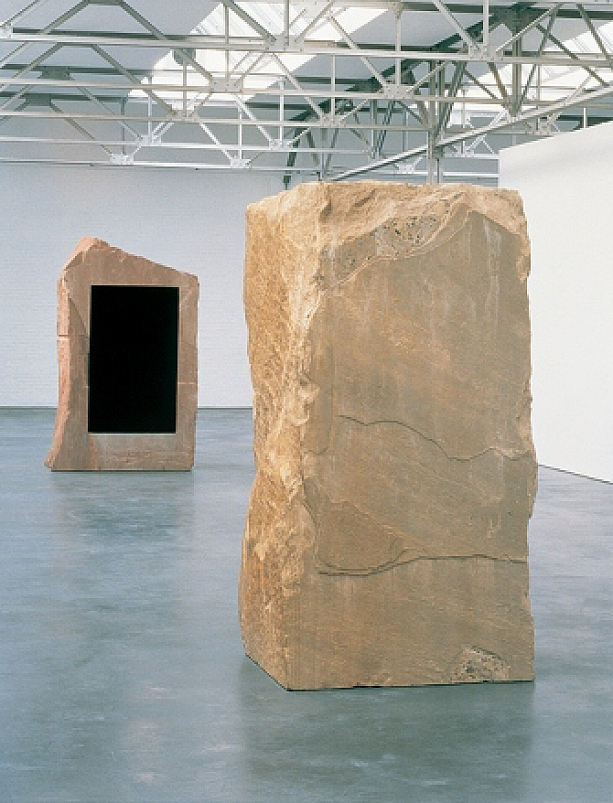At the start of the eighties Anish Kapoor emerged as a member of the new generation of British sculptors. This group, which also included Tony Cragg, Richard Deacon and Bill Woodrow, stood out by way of their poetic and intuitive approach to the making of sculpture. In 1982 Kapoor began to acquire international recognition, partly due to his participation in the 'Aperto' in Venice. His work was first shown in the Netherlands in 1983 at 't Venster in Rotterdam. In 1990 Anish Kapoor represented Great Britain at the Venice Biennial and, a year later, was granted the prestigious Turner Prize.
In 1992 De Pont acquired a work by Kapoor: this is a space which has been completely covered with blue pigment, and the space contains a sphere which has also been covered with the pigment. Only after several seconds does the viewer discern this enormous round form (240 cm. in diameter), which looms forth from the uniform blue of the space and seems to float in it. De Pont also houses a work referred to as 'Void'. A long-term loan from the artist, this work consists of a high, completely white space with a dark, round spot on the floor. On closer observation, one discovers that the spot is not something placed on the floor but is rather an opening in the floor, a seemingly bottomless hole. In 1992 Kapoor produced two more works of this kind, which he has named 'Descent into Limbo'. These are larger variations of the work in Tilburg, and each of them has its own architectonic environment. At Documenta IX in Kassel, this was a pavilion made of concrete, simple and intended as a temporary construction; but for Expo '92 in Sevilla, a veritable edifice (roughly ten meters in height) was erected, and this was given a permanent place at the Expo site.
The 'void' or 'empty space', as a metaphor for the unknown which nonetheless has a presumed presence, is a central theme for Kapoor. Oddly enough, however, some of his work can have great physical presence. Particularly in recent years he has made frequent use of enormous stones which are left rough on the outside, but have been given an 'inner space' which is so perfectly smoothed that it seems immaterial.
Color is an essential element in the work of Kapoor. In many of his works he has made use of intense, saturated colors that seem to absorb light and thus often lead to unusual optical effects. At De Pont the artist is showing, for the first time, several works which have no color: with wood, he has created rectangular, completely white spaces, which have openings on opposite sides. Because the inside is absolutely smooth, the eye of the viewer is 'caught' by nothing other than the opening on the other side of the 'box'. The effect is quite peculiar: the other side seems to be behind one rather than in front of one, and as a viewer, one seems to have vanished from one's own field of vision.
Color is an essential element in the work of Kapoor. In many of his works he has made use of intense, saturated colors that seem to absorb light and thus often lead to unusual optical effects. At De Pont the artist is showing, for the first time, several works which have no color: with wood, he has created rectangular, completely white spaces, which have openings on opposite sides. Because the inside is absolutely smooth, the eye of the viewer is 'caught' by nothing other than the opening on the other side of the 'box'. The effect is quite peculiar: the other side seems to be behind one rather than in front of one, and as a viewer, one seems to have vanished from one's own field of vision.




![[Translate to Engels:] [Translate to Engels:]](/fileadmin/_processed_/5/f/csm_Kapoor_1995_2_ee25f7d7bb.jpg)
![[Translate to Engels:] [Translate to Engels:]](/fileadmin/_processed_/8/5/csm_Kapoor_1995_607035a268.jpg)
![[Translate to Engels:] [Translate to Engels:]](/fileadmin/_processed_/7/c/csm_Kapoor_1995_5_13c84ad51c.jpg)